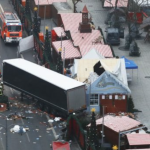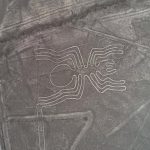On the second anniversary of the murder of the young Kurdish woman by the morality police, the authorities continue to impose silence and censorship. The family, under house arrest, is threatened with imprisonment if they speak publicly. The weakness and divisions of the opposition play into the hands of the ayatollahs. The new president promises more freedom with regard to the Internet and the hijab.
Milan () – Record numbers of executions, up by up to 80% compared to the recent past; arrests of protesters and relatives of victims of government repression; parents are prevented from paying their respects at the grave of their daughter, while dozens of prisoners are starting a hunger strike to keep her memory alive. Two years after her death on 16 September 2022, outside a Tehran metro, at the hands of the morality police, who had arrested her for not wearing the hijab, the obligatory veil, correctly, the memory of Mahsa Amini She is still alive. And of the movement that emerged after the death of the 22-year-old Kurdish woman, that popular uprising shouting “Women, life, freedom” that the ayatollahs tried to suppress, but which remains a source of inspiration, in a battle for freedom and rights that unites a large section of the population. A popular uprising, suppressed with blood but not annihilated, which sees in the hijab the symbol and instrument of female oppression, as underlined by the Evin prison where Nobel Peace Prize winner Narges Mohammadi is imprisoned. “The struggle,” writes the activist in a message that has gone viral, “is not only to claim the right of women to dress as they wish, but also to oppose the tyranny of theocratic dictatorship. There is no democracy without women’s rights.”
Primacy in executions
In 24 months, so much time has passed since the murder of the young Kurdish woman – and little or nothing has changed with the death in a helicopter accident of the ultra-conservative president Ebrahim Raisi and the election of the moderate Masoud Pezeshkian-, Iran confirms its position at the top of the world in the use of the executioner. A systematic use of capital punishment not only for drug crimes, but also to suppress internal dissent, with a record growth of 80% in two years and the highest per capita rate documented worldwide. Activists and movements linked to civil society, in fact, link the trend to a broader strategy adopted by the Islamic Republic to instill fear, while the verdict is often the result of trials in which transparency is lacking and international standards are not met. The Iran Human Rights (Ihr) group reports that between October 2022 and September 2024, at least 1,452 people were hanged, a significant increase compared to the 779 in the two years preceding the 2022 protests. According to Human Rights Watch (HRW), most death sentences are the result of summary trials or with very vague accusations (and evidence). In August 2023 alone, the UN High Commissioner for Human Rights reported at least 93 executions, although Ihr and Hrana suggest the figure is well over 100. Some months in 2023, such as May, saw exceptionally high numbers, with 145 consecutive sentences. Since January 2024, more than 410 executions have been recorded, and a further escalation is expected.
Dissent, repression and impunity
The widespread anger over Mahsa Amini’s death, which gave rise to the “Women, Life, Freedom” movement, represented the greatest challenge to the Islamic Republic and the ayatollahs’ regime since its founding in 1979. And the subsequent crackdown was just as bloody, with more than 550 victims, including dozens of children, more than 22,000 arrests and at least 10 protesters falling into the hands of the executioner. In recent days, the young woman’s father, Amjad Amini, has claimed the right of his family – as well as others who mourn the murder of relatives at the hands of the state – to honour her memory in secular or religious ceremonies. However, the authorities have responded with an iron fist, trying to nip any attempt at commemoration in the bud, forcing the young woman’s relatives, mainly her parents, to remain confined under house arrest under threat of arrest and transfer to prison. While Iranians abroad, from Europe to the United States and Australia, have been holding demonstrations and protests, at home there have been attempts at strikes – immediately blocked – in at least 11 cities in West Azerbaijan and Kurdistan.
In the days leading up to the anniversary, security forces and intelligence units arrested activists and relatives of the victims, and tightened controls in Mahsa’s hometown of Saqqez, with checkpoints and plainclothes officers patrolling the streets. Scenes similar to those last year, on the first anniversary of the death, with the family under arrest amid fears of further popular uprisings. In a report, the UN-backed Independent International Fact-Finding Mission on Iran warns that Tehran has “intensified its efforts to … crush residual initiatives of women’s activism”. And the methods used amount to “crimes against humanity”, although so far no leader has been held accountable or responsible. “Two years after the demonstrations, the leaders of the Islamic Republic have not restored the status quo ante, nor regained lost legitimacy,” charges Roya Boroumand, co-founder of the US-based Abdorrahman Boroumand Centre.
The hope of a people
The issue of women’s rights, and more specifically that of the veil, was the focus of Pezeshkian’s first press conference yesterday since he took office in July. The president assured that the morality police would stop “harassing” women, fulfilling – at least in words – the promises he made during the electoral campaign, in which he declared himself against patrols posted in streets and squares to control women’s clothing. He also promised a relaxation of restrictions on the Internet and social networks, considering them one of the “priorities” of his government. Words – and announcements – that feed the hope of Iranians in a future of greater rights and freedoms, and that for this reason have been widely circulated on the Internet in recent hours. Analysts and experts point out that one of the most significant results of the protests linked to the “Women, Life, Freedom” movement, at least in its first phase, was to unify the Iranian people against a violent, retrograde and repressive leadership. The protests affected more than 160 cities, from metropolises such as Tehran, Mashhad, Isfahan, Tabriz and Sanandaj to smaller urban centres, border villages in the south-east with Pakistan or in the Kurdish far north.
Demonstrations have been joined by students, workers, members of ethnic and religious minorities, with women, protagonists of this battle for freedom, in the front row. While the wave of dissent and protest has undermined the Ayatollahs’ regime, which has nevertheless been able to react, to become more compact and to harden itself, it has also exposed the internal divisions of an opposition which, at the political and institutional level, remains fragile and inconsistent. The real problem, in fact, is the lack of internal “alternatives” to the current theocratic leadership, which can thus remain firmly in power, as noted by academic Arash Azizi, author of the book “Ce que veulent les Iraniens”. He adds, however, that he believes that “Iran will not return to the situation before 2022” and that in the short and medium term “it will experience radical upheavals”. In an interview given to IranWire under a pseudonym, a leading figure in the country’s cinema and culture stresses that unity remains the fundamental value in order to be able to influence decisions: “If we do not remain united, we will fall one by one.” “So,” she continues, “it may only have been two years since the night when the women of Tehran gathered outside Kasra hospital, or since the women of Saqqez took off their veils in the cemetery of Aichi, but for us – for all of us who have become ‘us’ under a hail of bullets, in the shadow of batons, fleeing plainclothes officers, resisting interrogations – it seems like a lifetime.” A hard life, but – she concludes – full of hope.”
THE GATEWAY TO THE EAST IS ASIANEWS’ NEWSLETTER DEDICATED TO THE MIDDLE EAST
WOULD YOU LIKE TO RECEIVE IT EVERY TUESDAY IN YOUR EMAIL? SUBSCRIBE TO THE NEWSLETTER IN THIS LINK












Add Comment